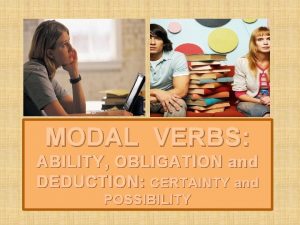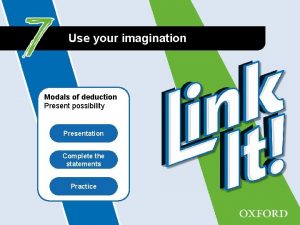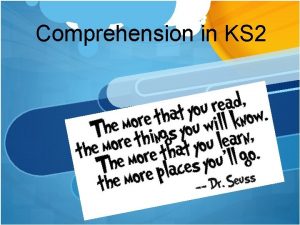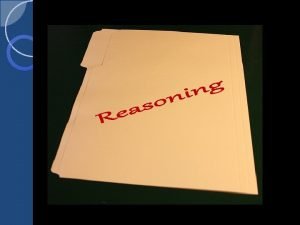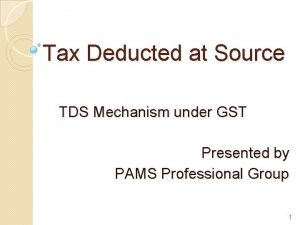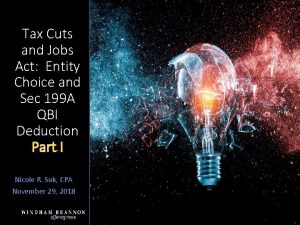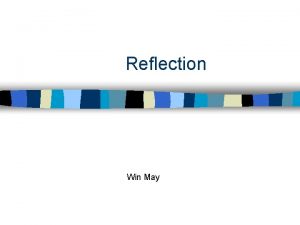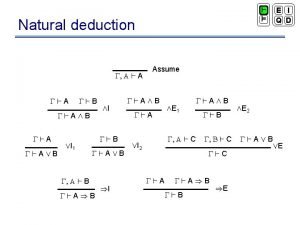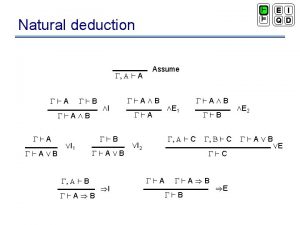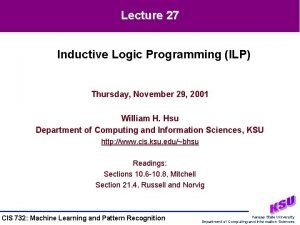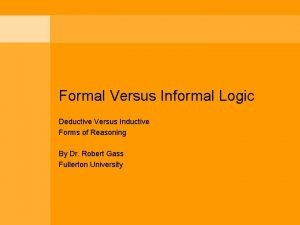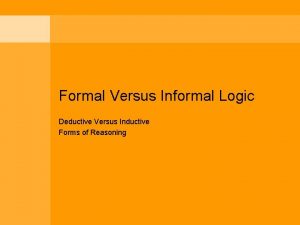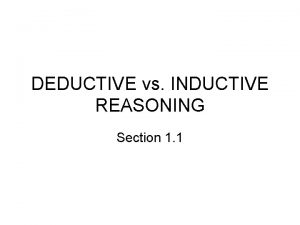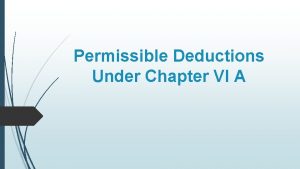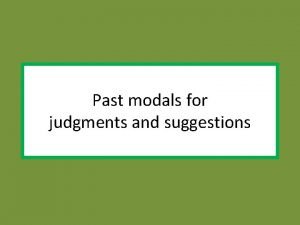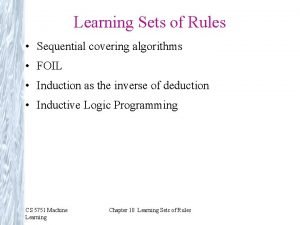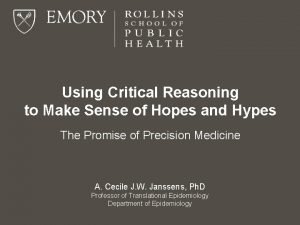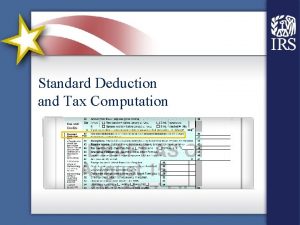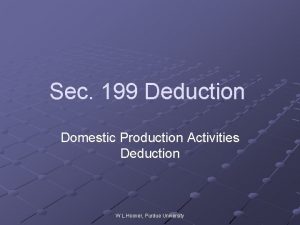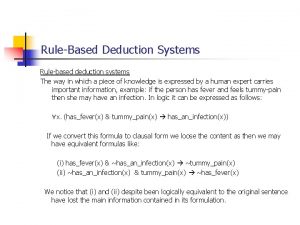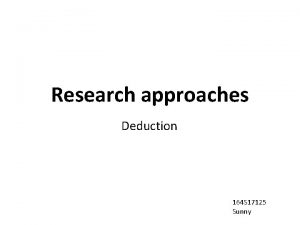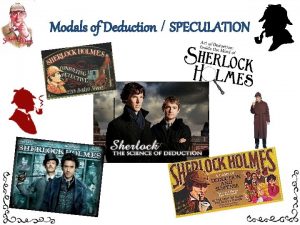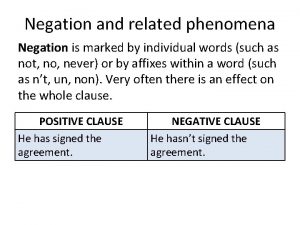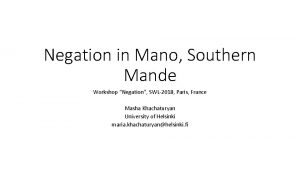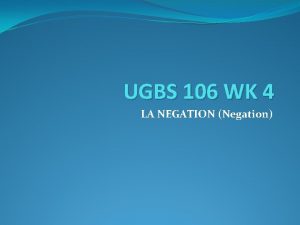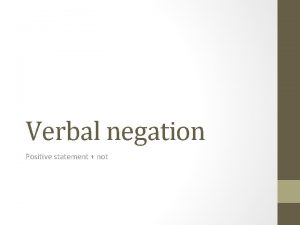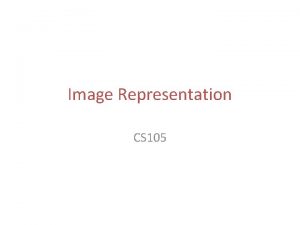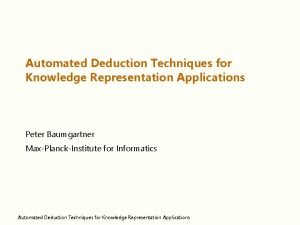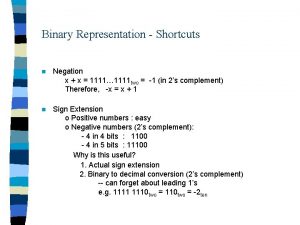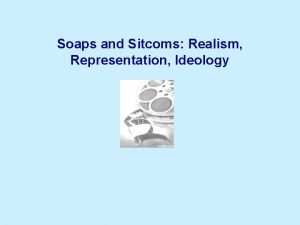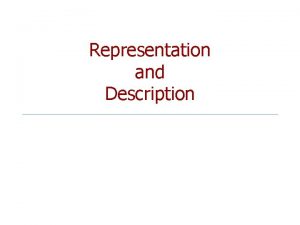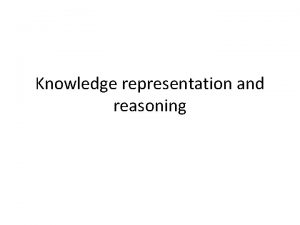NEGATION AND DEDUCTION The Representation of Negation In






















- Slides: 22

NEGATION AND DEDUCTION The Representation of Negation In Cherubini, Psicologia del Pensiero

Through different kind of tasks, which mostly involved abstract stimuli, Wason searched for the existence of a fixed trend in the reaction time to the four different types of sentences he distinguished.

Wason and the sentence classification Given a red circle, a sentence can be 1. 2. 3. 4. True Affermative (TA) : the circle is red False Affermative (FA) : the circle is blue Tue Negative (TN): the circle is not blue False Negative (FN) : the circle is not red

TA < FN < TN

1) S. : The circle is red Default value: T correspondence Core exctraction and M: R. : (circle, red) M. R. is confronted with sentence "TRUE" value is maintained 2) Search for presence of negation in S Negation is absent No correspondence Value is changed to "FALSE" Negation is present task complete: T/F A value is again reversed task complete: T/F N

Plausible Vs. Implausible Negative Sentences Wason: Abstract Context Plausible Negation: the circle 6 is not blue. 5 3 6 2 Implausible Negation: the circle 4 in not red. 4 1 Plausible negative sentences are the ones that refer to the exception in a group, negating the most relevant feature of the category.

TA < FN < TN-P < TN-Im. P

Plausible Vs. Implausible Negative Sentences Concrete context: Valle Arroyo Natural languages use the norm. negative statements to distinguish and contrast the exception from " I have not Talked with President Obama today " " I have Talked with President Obama today " From Valle Arroyo, Negatives in Context Valle Arroyo proposes a new distinction: he drops the Plausible Vs. Implausible distinction for a Discrepant Vs. Similar, based on the similarity of one word with others.

NEGATIVES IN CONTEXT Francisco Valle Arroyo • Design: two Main groups, each divided in a set group and a control group (No set): high and small contrast group. Every group was itself divided into two subgroups, where the material was distinguished by discrepancy (e. g. three colors and a taste) or similarity (e. g. three american cities and a french one) of the stimuli. The set group had a oddity problem task before the main judgment task, in which consisted in picking the out-of-category word in a set. • Methods: Each subject had to verify 64 sentences which could be one of the following types, True Affirmative (TA), False Affirmative (FA), True Negative (TN), and False Negative (FN). Because of the similar-discrepant condition, the type of sentence raised to eight categories.




Data Analysis Small Contrast Group: All main effects were significant, as well as the interaction Discrepancy. XNegation. XTruth and Discrepancy. XNegation. Large Contrast Group: An Anova shows that FA and TN are effected by discrepancy of the subject; when only true sentences were considered the Discrepancy. XNegation interaction was significant.

Small contest TA D TA S FA D TN D FA S FN D FN S TN S Large contest TA S FA D TN D FA S FN D TN S

TN-D < FN < TN-S

Mental Rappresentation of Negation This kind of results cannot be explained by the two stage process proposed by Clark and Chase. Trying to find a solution, many authors suggested that the mental representation of negation is based on the construction of classes of contrast. Classes of contrast are superordinate categories of the one negated in the sentence, they can be selected based on the context or previous experience.

"the whale is not a fish" (whale, non-fish, animal)

Using a revisited version of Wason's selection task, researchers found that if two concepts are perceived as similar they are likely to be decoded as negation of one another (e. g. non-mammal=fish). "if on side A there is not an hexagon, than on side B there will be a 4" "if on side A there is not a L, than on side B there will be a 7" Side A: Side B: ?

Almost every participant, with a valid modus ponens inference, concludes that on side B there is a 4, but just half or less, with an equally valid modus ponens, says that there is a 7. Cherubini, Mazzocco, L'effetto della somiglianza nella negazione. Explanation: the square is a much better non-hexagon than a non-L. According to this argument, proposed by Cherubini, very often the mental representation of a negative sentence is not just composed by the name and the negated category (whale, non-fish) but it's integrated with an arbitrary assumption. This assumption derives from the class of contrast.

Can we use these findings to explain the trend found by Valle Arroyo?

Paris is not an american city Paris is not a french city Miami is not a french city (paris, not american, french) (paris, not french, french) (miami, not french, american)

Paris is not an american city Paris is not a french city Miami is not a french city (paris, not american, north american) (paris, not french, north american) (miami, not french, north american)
 Induction vs deduction
Induction vs deduction Certainty examples
Certainty examples Modals of deduction present
Modals of deduction present Inference and deduction
Inference and deduction Deductive vs inductive
Deductive vs inductive Gst deduction at source
Gst deduction at source Gst deduction at source
Gst deduction at source Qbi deduction example
Qbi deduction example Rule based deduction system in artificial intelligence
Rule based deduction system in artificial intelligence Deduction practice pictures
Deduction practice pictures Induction philosophy
Induction philosophy Natural deduction cheat sheet
Natural deduction cheat sheet A/b/c rule
A/b/c rule Induction as inverted deduction
Induction as inverted deduction Informal deduction meaning
Informal deduction meaning Induction versus deduction
Induction versus deduction Example of deduction
Example of deduction Permissible deductions
Permissible deductions Conduit
Conduit Judge past tense
Judge past tense Sequential covering algorithm in data mining
Sequential covering algorithm in data mining Literal questions
Literal questions Argumento kahulugan
Argumento kahulugan

